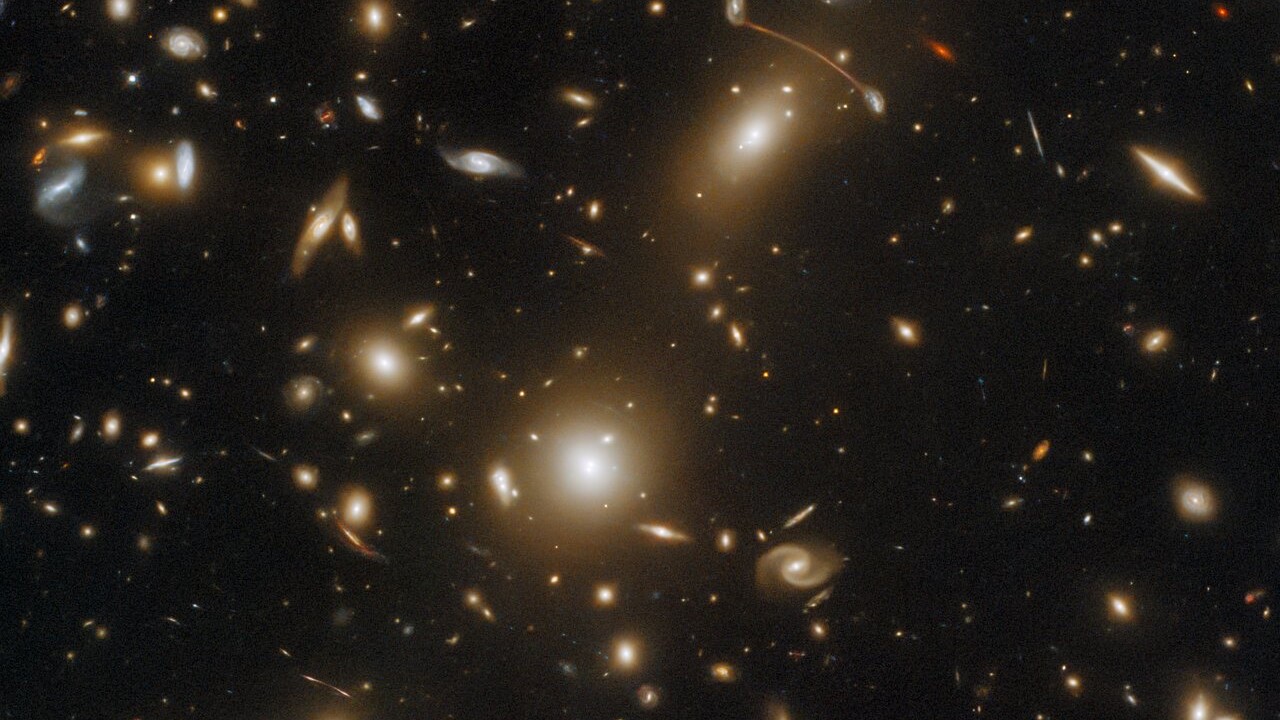Hubble Space Telescope shows distortions of massive galaxy cluster in stunning image

A massive galaxy cluster shines in a new telescope image, distorting the view of more distant galaxies in the background.
The galaxy cluster, named Abell 1351, is located some 4 billion light-years away in the northern constellation Ursa Major. The recent image from the Hubble Space Telescope captures a striking view of thousands of galaxies bound together by gravity.
Galaxy clusters typically contain galaxies of various ages, shapes and sizes. A typical galaxy cluster has a mass of about a million billion times the mass of the sun, representing one of the largest structures in the universe.
Related: What's it like inside a massive galaxy cluster? Scientists used 196 lasers to find out.
The recent image was taken using Hubble's Wide Field Camera 3 and Advanced Camera for Surveys. The bright light of distant galaxies streaks across the image, caused by a phenomenon known as gravitational lensing, according to a statement from the European Space Agency (ESA).
Gravitational lensing occurs when the powerful gravitational field produced by a massive galaxy cluster bends the light of more distant objects observed along the same line of sight. This means that when objects are viewed through the galaxy cluster, they appear magnified and distorted.
"This menagerie of massive clusters demonstrates interesting astrophysical phenomena, such as strong gravitational lensing, as well as showcasing spectacular examples of violent galaxy evolution," ESA officials said in the statement.
Get the Space.com Newsletter
Breaking space news, the latest updates on rocket launches, skywatching events and more!
This gravitational effect offers astronomers valuable insight into the distribution of mass within a lensing galaxy cluster such as Abell 1351. The recent Hubble image was taken as part of an astronomical album called the Snapshot Program, which aims to document some of the most massive galaxy clusters using Hubble's powerful cameras.
"These Snapshot Programs are lists of separate, relatively short exposures which can fit into gaps between longer Hubble observations," ESA officials said in the statement. "Having a large pool of Snapshot candidates to dip into allows Hubble to use every second of observing time possible and to maximize the scientific output of the observatory."
Follow Samantha Mathewson @Sam_Ashley13. Follow us on Twitter @Spacedotcom and on Facebook.
Join our Space Forums to keep talking space on the latest missions, night sky and more! And if you have a news tip, correction or comment, let us know at: community@space.com.

Samantha Mathewson joined Space.com as an intern in the summer of 2016. She received a B.A. in Journalism and Environmental Science at the University of New Haven, in Connecticut. Previously, her work has been published in Nature World News. When not writing or reading about science, Samantha enjoys traveling to new places and taking photos! You can follow her on Twitter @Sam_Ashley13.









